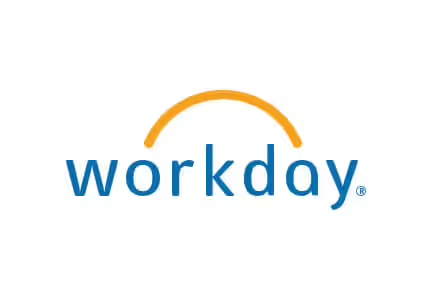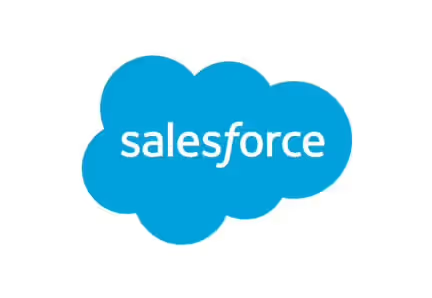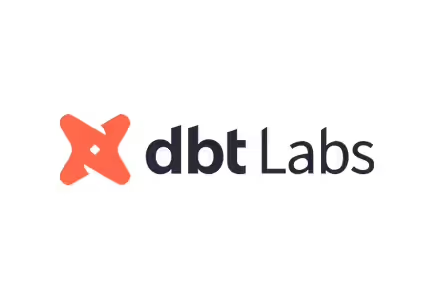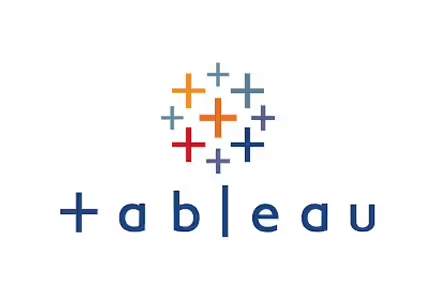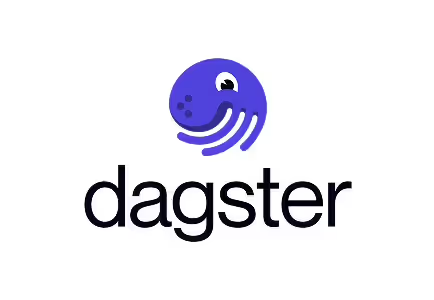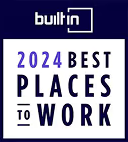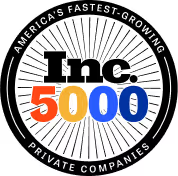Workday data quality and migration

5 Key Takeaways from Workday Rising 2024
Last week, some of our team hit the road and headed to Vegas for Workday Rising. This year’s conference offered a deep dive into the challenges and opportunities facing organizations in a fast-moving digital landscape, where there is more technology and data available than ever before. Didn’t make it to the show? Here are the five key takeaways we brought back from the event:
1. Data Quality Remains a Priority (and a Challenge)
Organizations continue to struggle with data quality, highlighting the difficulty in accessing the data they need. A recurring pain point at the conference was the issue of handling historical data—how to store, access, and analyze it without burdening production systems. The sheer volume of data accumulated over time makes it hard to maintain quality while ensuring that critical information is accessible when needed. Companies need better strategies to tackle these data challenges, especially as they continue to rely on data-driven decisions.
2. Change Management Doesn't End After Go-Live
A crucial reminder from the event was that change management extends far beyond the go-live date of any new system implementation. Many attendees noted that using new systems posed unforeseen challenges, reinforcing the need for continuous support and training. Adapting to a new way of working requires time, and organizations must be proactive in managing change post-implementation to drive user adoption and system optimization.
3. Analytics: A Tool for Better Decision-Making
Another major focus at the conference was the importance of analytics in driving better-informed decisions. Organizations that can effectively leverage their data with the right analytical tools are able to make smarter decisions faster. Workday's commitment to improving analytics was evident throughout the conference, with discussions on how these tools can empower teams across finance, HR, and operations. As businesses evolve, those who excel at using analytics will gain a competitive edge.
4. Don’t Underestimate Data Migration
A key discussion repeated throughout the conference was the difficulty of data migration. Many organizations admitted that they were not fully prepared for the complexities involved in moving large amounts of data into new systems. Migrating data—especially when it spans multiple systems, formats, and decades—requires more than just technical know-how; it demands comprehensive planning and strategy. Workday Rising attendees shared stories of underestimating this process and the lessons learned from the experience.
5. Workday’s “Forever Forward” Vision: The Future of AI and Innovation
The overarching theme of the conference, “Forever Forward”, was perfectly aligned with Workday’s mission to continuously innovate. One of the most exciting announcements was Workday Illuminate™, a next-generation AI product designed to accelerate decision-making and problem-solving in HR and finance. In a world moving at lightning speed, Workday’s new AI tools, combined with Orchestrate, and Extend, are unlocking new possibilities for businesses to grow and innovate. This forward-thinking approach signals a future where AI is central to business operations, and those that leverage these technologies can achieve exponential growth.
As Workday continues to push the boundaries of what’s possible, companies have an opportunity to follow suit, embracing new technologies and strategies to stay ahead in a fast-paced world. If your organization is looking to tackle any of these key areas, the Definian team would love to help. As an official Workday partner, we have been successfully helping many companies successfully migrate to Workday and unlock the full potential of their data beyond implementation.

Workday Human Capital Management Data Migration for a $3.5B Healthcare System
A $3.5B healthcare provider moved their HCM and payroll operations from 15 disparate legacy applications to a single Workday tenant. Premier facilitated the data migration for this initiative. Download the PDF to learn how Premier made the data track successful.
Project Scope
- 15 Legacy Applications
- 50 Conversion Objects
- 20K Employees
- 18 Months
Key Data Objects
Core HCM | Compensation | Payroll | Absences | Benefits | Talent | Recruiting | Learning
Primary Data Sources
Infinium | Sage HRMS | Meditech | JobVite | Healthcare Position | Manager | MyCompass | Healthstream | Relias | Lippincott | Elsevier | ADP | Fidelity | Active Directory | Reliance Matrix
Expectations
- On-Time and Budget
- Drive Data Quality
- Minimize Client Resource Effort
- No Impact on the Open Enrollment Process
Risk Factors
- Client Resource Constraints: Client resourcing was limited and often times a single person was responsible for many tasks spread across multiple workstreams. Premier needed to enable our client to spend time focusing on items that only they could answer and clear other data obstacles from their path.
- Duplication Across Legacy Systems: Each legacy system used a worker-based approach in how they managed worker data, with three positions under the same worker as three separate workers with different employee IDs. Additionally, the legacy infrastructure prevented the business from getting insights of harmonization issues across the various data sources.
- Inconsistent Legacy Data Files: When the legacy data was managed by third-party vendors or the legacy infrastructure prevented direct access, data extracts were generated as part of the migration. Getting consistent/accurate extracts from these systems was difficult and needed processes in place that helped ensure their accuracy.
- Last Minute Changes to Scope: Change is expected in large implementations. The client understood the risk of scope change and expected the data team to address any scope change in stride. The most impactful scope change was that benefit providers switched during the final build. This required new data sources to be incorporated and tested without impacting the timeline.
- Benefits Open Enrollment: During the last two months of the implementation, the organization went through open enrollment with a new benefits provider. Premier needed to enable the client to focus on facilitating open enrollment while incorporating all the necessary changes needed to the data migration without impacting timelines.
- Complex Cutover Transaction Maintenance: High volumes of transaction data needed to be migrated, monitored, and managed during the cutover window. To ensure the accuracy of migrations and to not disrupt business, validation needed to be efficient and trustworthy.
Premier's Workday Accelerator's
- Shortened Tenant-Build Timelines: Hundreds of Workday pre-validations dynamically check converted data against tenant configuration before load; speeding up issue identification, issue resolution, and overall load time allowing more time for users to test.
- Real Data, Real Quick: With Premier, clients achieve data-load success percentages over 90% in the first (Foundation) tenant build, fueling more accurate Workday tenant configuration and test results during the subsequent project stages.
- Workday Delivery Approach: Step-by-step data conversion execution process from the Plan stage through the Deploy and Hypercare stages, understanding the dependencies and ensuring all execution follows the Workday delivery approach.
- Tenant Upgrade Support: Data conversion tool assessment with each semi-annual tenant version release to ensure conversion solution always meets the current requirements.
- Templated Workday Conversion Tools: Developed with years of Workday implementation experience, our tools expedite requirement gathering and conversion development while ensuring you get the best solution.
- Customized Data-Quality Strategy: Insight into the legacy data landscape, alongside the understanding of Workday best practices, allows Premier to deliver a customized data-quality strategy suited to your specific needs.
- Automated Cleansing: Automatically cleanse data objects such as Employees, Addresses, Students, or Suppliers, ensuring that your Workday solution goes live with data quality standards fit for the cloud.
- Your Data, Workday-Ready: Generate load-ready data in standard Workday Advanced Load, Enterprise Interface Builder (EIB), iLoad, and any other custom load workbooks.
- Data Validation Support: Accelerate the validation process through post-conversion validation planning and reports for functions such as payroll or finance.
Mitigating the Risk - Client Resource Constraints
- Gated activities within project management strategy to keep the team focused on most critical tasks
- Leveraged Applaud data profiling capabilities to accelerate data mapping activities
- Accountable for data extraction, profiling, analysis, cleansing, and transformation data conversion activities enabling client resources to focus on requirements, validation, and getting familiar with Workday
- Applaud's data cleansing and enrichment features enabled the business to focus on what correct looks like and let the actual data cleansing occur in within Applaud's data repository
Mitigating the Risk - Duplication Across Legacy Data Sources
- Leveraged Applaud's data matching engine to automate the legacy data linkage and deduplication of employee and contingent workers
- Automated the process to select the correct primary position by applying a custom set of rules to Applaud's data-matching engine
- Improved the business's vision of overlapping data across the legacy data sources through Applaud's reporting capabilities
- Implemented a detailed audit approval process that provided a clear view of all the deduplication and consolidation that occurred during the migration
- Broke down the silos between multiple entities through the establishment of clear data ownership, stewardship, and governance processes to promote trust and increase the accuracy of all cleansings, enrichments, and transformations
- Managed a new position-based system through the implementation of complex eligibility checks and provided the analysis to give the business clarity and trust that the plans were assigned appropriately to the correct position
Mitigating the Risk - Inconsistent Legacy Data Files
- Identified file structure changes with the third party provided data files using Applaud's import reporting process
- Established file review process with third-party system administrators to confirm unexpected changes that occurred before each tenant build
- Created detailed workflows that ensured alignment between the business, third-parties, and data conversion team
- Documented the complex data extraction process to show where, when, who, and how all data is extracting from legacy environments
Mitigating the Risk - Last Minute Changes to Scope
- Executed data track risk management process that pinpointed scope risks months ahead of the go-live period to allow adequate time to mitigate most changes
- Kept last-minute specification changes in line by enforcing Premier's specification freeze portion of our process that requires extra approvals when changes come in after agreed-upon dates
- Quickly identified the impact of requested specification changes through Applaud's "Where Used" and "Functional Snapshot" features
- Collaborated with the implementation partner to identify the most efficient way to incorporate critical scope changes that occurred mid-build into the load schedule without impacting timelines
- Implemented scope changes into the automated migration programs without impacting deadlines through Applaud's transformation components
Mitigating the Risk - Benefits Open Enrollment
- Proactively strategized with the benefits team to change the conversion approach to accommodate open enrollment administration and the incorporation of new benefits provider data into the implementation
- Leveraged Applaud's rapid application development capabilities to implement conversions necessary for the new benefits provider within the project timeline
- Facilitated additional test cycles to flush out issues ahead of the gold build window
Mitigating the Risk - Complex Cutover Transaction Maintenance
- Enabled the team to address missing configurations in the tenant ahead of the cutover window through Applaud's Workday pre-validations
- Instilled confidence in the transactional data through Applaud's Workday pre-validation reports that alert the team of data issues within the EiBs and DGWs
- Optimized transaction conversion schedule by identifying and proving out that certain data files be loaded prior to and after cutover
- Facilitated the migration process through a repeatable, predictable, and highly automated migration process within Applaud
- Accelerated the validation and reconciliation process by providing validation reports that join the legacy data to the fully migrated data from Workday.
- Provided 24 hour support during throughout the cutover period in case of any unexpected surprises (there weren't any)
Project Results
- 100% load success for Core HCM
- Migrated 19,794 employees and 3,579 contingent workers with 100% load success
- Identified and closed 1,179 of 1,192 data related defects
- Harmonized data for 1,173 duplicated employees
- 97% load success across all data objects for the Configure and Prototype build
- Data conversion completed on time and within budget
- Expectations for limiting internal resource time was exceeded

Formalizing Data Governance As Part of Your Workday Implementation
Modernizing to the Workday platform enables organizations to increase efficiency and gain insights that were not feasible with fragmented legacy systems. However, implementing the Workday platform is not a silver bullet to solving the data management challenges organizations are facing in today’s data-driven climate. Adapting to the increasing speed, scale, and variety of data along with growing data privacy regulations present obstacles that every organization is working to address. These challenges are further compounded with frustrated data consumers having to spend more time collecting and cleansing data than using it. While Workday’s modern platform can help tackle these challenges, a data governance discipline is required to formalize the data standards and policies that not only guide the implementation of the platform but also provide the accountability structure to uphold them across the organization. When planning for a Workday implementation it is essential to evaluate your data governance strategy if one does not exist. Launching your data governance journey with a Workday implementation presents a golden opportunity to shift your data culture forward while working through the critical data and process requirements of the business.
Data Governance with a Workday Implementation
As an official Workday partner, Definian has deep experience supporting organizations with data migrations from complex legacy systems to the Workday platform. Our methodology includes data readiness activities that expose data quality issues that require remediation to migrate data successfully to the target environment. While this exercise is beneficial to ensuring clean data is migrated, there are no methods in place to certify that it will remain clean in the future. For this reason, we strongly advise that data governance is a must to ensure post-implementation success.
Starting data governance as part of a Workday implementation may cause concern when viewed as a constraint. We firmly believe data governance can work in parallel and should never pose any blockers to the execution. Instead, outputs from the data migration and implementation activities complement data governance by serving as inputs and use-cases. While data governance provides oversight, the data readiness, design, configuration, and decisioning aspects of a Workday implementation inform data governance with the accompanying data standards, processes, policies, and accountability structures that need to be formalized.

Making the Case for Data Governance
Data governance is a fundamental data management discipline that provides immediate value in addressing the needs for data quality, data literacy, data security and compliance. The simple goal of data governance is to establish clarity and trust in the data that drives the business. This is accomplished by formalizing working definitions, data standards and policies that are enforced through an accountability and stewardship model. With a data governance capability established, organizations can effectively manage their data across the key functions of data management.

Our Data Governance Framework
The traditional application of data governance has been met with more failure than success. It is characterized as a centralized program that focuses on data protection using command-and-control methods that dictate how data is accessed and used throughout organization. This approach faced failure as it would often result in bureaucratic processes the made data governance a bottleneck to producing any value. A key lesson learned was that data governance is not a one-size-fits all approach and needs to be flexible in tailoring to an organization’s specific needs.
We take a modern approach to data governance by using our agile framework that is centered on the goals of promoting data usage by establishing trust while enforcing adherence to data security policies. With this framework we apply a use-case driven methodology to launch data governance and iteratively scale it to a desired state with an intent to provide immediate business value. The key pillars of the framework ensure that both culture and technology support the people, process, and methods to establish data governance.

Using our framework clients quickly realize that there are many aspects of data management that are already being governed informally in operational siloes or systems. Our framework recognizes the need to formalize those behaviors by establishing a data governance discipline. By raising awareness and fostering collaboration around the working standards, policies, and guidelines for using and managing data, data governance serves as a success enablement factor for any business initiative that hinges on data.
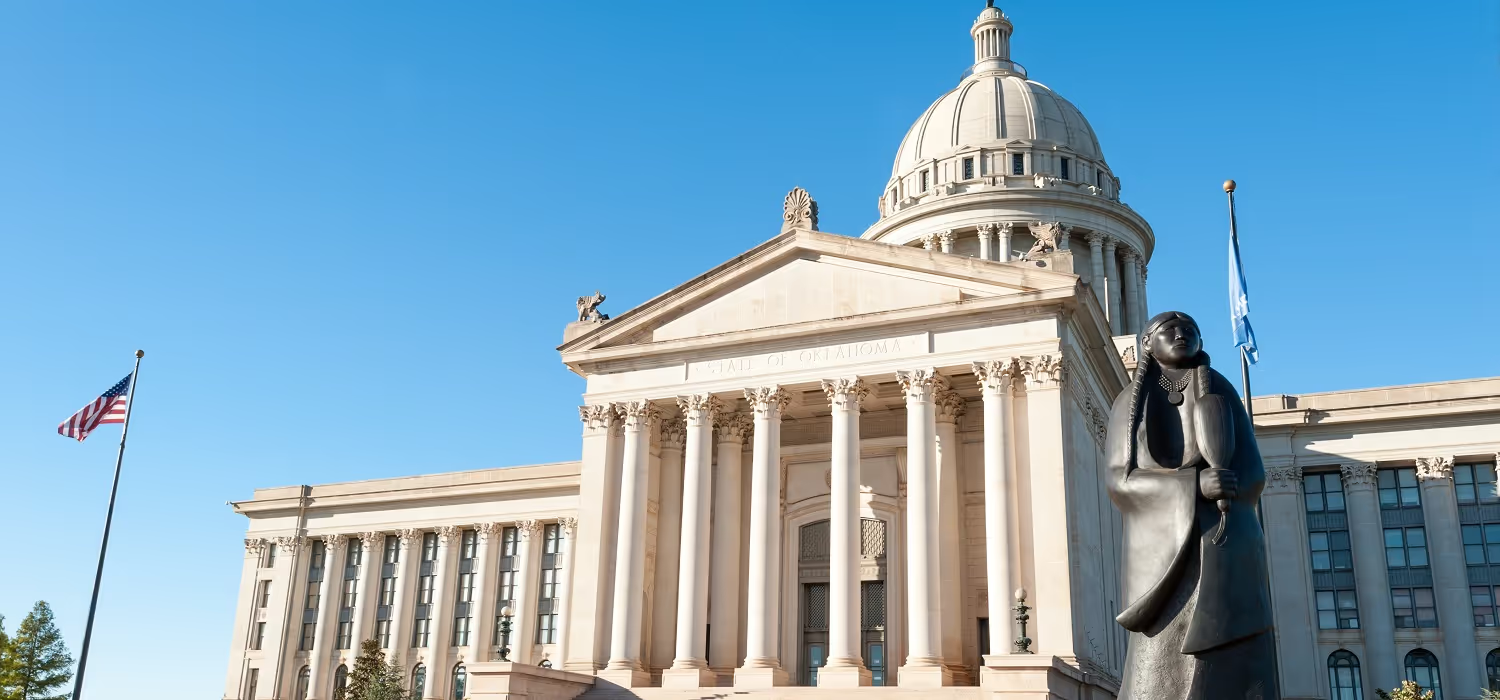
100% Workday Load Success for State Government
Massive Scope
The project was to perform data analysis and migration of Human Capital Management (HCM) and Payroll data from PeopleSoft, learning data from Taleo, and Benefits data from a custom benefits administration system into Workday for a state government with 34,000 active employees and 120 agencies.
“Thank you for putting in all this work [to extract data from Taleo]. In the end, you’ll be saving the state and the project a ton of money and headache,” Director of Workday Operations for the State Government
Important Goals
The state embarked on a transformation initiative to consolidate their processes and data into a single instance of Workday and to eliminate their dependence outdated technology. This project launched amid the COVID-19 pandemic. These circumstances accelerated a variety of work-life changes and underscored the importance of project goals. The goal of the Workday implementation was to modernize the client’s HCM system and keep individuals connected while shifting to a hybrid work environment. Workday HCM created a user-friendly hub of employee resources and workforce data that will allow the client to strengthen themselves as an employer. Looking ahead, employees will also enjoy an enhanced career experience with the new capabilities available to them.
The Risks
The client had several concerns regarding the migration of their data and understood the risk. Definian worked with the state government and Workday teams to address these concerns, ensuring a successful and on-time Workday implementation.
Every data migration and implementation project has inherent risk factors. This client was most exposed to the following risks:
- Limited knowledge on data dependencies across different legacy sources
- Lack of experience with Workday target system requirements
- Employee staffing and overall resource constraints
- Reviewing transformed data in a timely manner prior to Workday loading
- Mapping PeopleSoft payroll codes to Workday reference IDs
Mitigating Risks
Definian mitigated the client’s high-risk areas by employing the following practices:
- Created detailed reports to help the client better understand their legacy data
- Worked alongside the client to develop a strategy to address legacy data issues
- Implemented programmatic data cleansing processes such as address standardization, reformatting of employee names to have proper casing, and reformatting of position IDs to be unique
- Configured data sets shared with the client to draw a connection between an employee’s data across multiple legacy sources
Definian executed the following actions to combat the risks associated with the client’s lack of knowledge of the Workday target system:
- Created validation reports tailored to Workday’s requirements for each individual data piece, allowing the client to address invalid data or missing Workday configuration prior to loading the data.
- Developed conversion error reports which allowed the client to identify legacy system issues, such as invalid, missing, or duplicate data. This enabled the client to address these issues early, a benefit as there is little ability to back data out of Workday once loaded.
- Built specific workbooks designated as client-facing validation files that were tailored for clear presentation and easy understanding of the data
“It has been great working with you all. This was definitely the best government implementation I have worked on,” Senior Associate for the System Integrator
Definian provided the following resources to help with staffing constraints:
- Took ownership of the data conversion process to allow client resources to focus on pre-load and post-load validation
- Led mapping specification sessions with the System Integrator and client to bridge the gap between the legacy and target data
- Facilitated discussions to identify resources and document Responsible, Accountable, Consulted, and Informed (RACI) parties
- Met with the client team to guide the pre-load validation process
To mitigate the risk of client data review deadlines Definian:
- Thoroughly laid out build schedules and review expectations
- Identified client resources for each specific conversion item, including back up resources where needed
- Met with client resource individuals to aid them in their data review
Also, to address the delays caused by mapping legacy payroll codes to Workday reference IDs, Definian:
- Coordinated the SI and the client team to determine pay code conversion logic
- Generated detailed reports highlighting any present payroll codes that did not have configuration in the Workday tenant
- Updated the build schedule to include additional time for new pay code mapping to be completed prior to each data load
Overview of Key Activities
- The team used the Applaud software in a deep analysis of the client data, using integrated reporting tools to identify project risks.
- Transformation and migration processes were developed for all required data from multiple legacy sources.
- Throughout each test cycle, data quality issues and load errors were identified and proactively corrected to alleviate stress leading up to the go-live window.
- The team was able to adjust to updated timelines and changes to the project scope.
- Data defect logs and build cycle trackers were maintained throughout the project to provide clear visibility on requirements and deadlines.
- Built a payroll reconciliation tool to aide in the validation of the payroll results in the Workday tenant.
- Developed a system to run payroll reports to proactively configure new earning and deduction codes ahead of each build window.
Successful Workday Go-Live
Definian played a major role in this successful Workday implementation. Achieving a 100% load success on critical-path files paved the way for a smooth transition into the client beginning HR business processes in Workday. In addition, the payroll reconciliation that provided line by line comparison and analysis of every single paycheck led to a successful payroll data conversion, which allowed for the client to confidently begin payroll processing in Workday immediately.
The Applaud data migration services allowed for a diligent data review process in the initial test cycles of the project, which provided key insight that was later pivotal to the on-time delivery of the Workday tenant. Detailed reporting and documentation maintained the integrity of the data as it was transformed and combined across multiple legacy sources.
Success Metrics
34k active employees converted
27k terminated employees converted
4.5k retired employees converted
Data extracts and conversion all completed on schedule to support cutover and catch-up transaction efforts
100% load success on critical-path files

Back to School: Data Migration for a Texas-Based Higher Education Institution
Launching a Workday Implementation Amid COVID-19
This college system’s data modernization initiative began in April 2020, about one month after COVID-19 restrictions went into effect nationwide. Accordingly, we quickly adapted to the changing nature of work; college leadership recognized that COVID-19 increased the need for ERP (Enterprise Resource Planning) transformation and immediately embraced the benefits of the remote work model. We conducted requirement gathering sessions virtually, bringing an intense focus to each meeting with minimal downtime between sessions. We collectively understood that the future of education and other critical industries will depend on cloud technology–we were already witnessing this shift with the rapid rise of remote learning. An ambitious effort today would benefit college students and employees for years to come.
Informed by Personal Experience
As this Workday implementation rapidly ramped up, I realized that I had more intimate knowledge of this institution’s data challenges than I originally anticipated. Like hundreds of colleges and universities, this client was still operating with outdated software for Human Resources, Payroll, and Student Services. BannerWeb was the legacy system at this college –the same system that I navigated as a college student and campus employee to pay tuition, update personal information, retrieve tax documents, and log hours worked. I had dealt with the limitations of the legacy system firsthand: frequent glitches with time entry, difficulty navigating to the desired web page, and the antiquated appearance of the system itself. As a result, I understood that a successful transformation to Workday would mean greater functionality and better usability for faculty, staff, and students. My personal experience with the Banner front-end allowed me to better understand how to profile the data and ultimately execute data conversion objects on our accelerated project schedule.
Solving Administrative Challenges in Higher Education
During the data assessment period, we discovered anomalies and business processes that had to be addressed as part of the transition to Workday. For example, college faculty have frequent position changes that coincide with changing academic terms. Although repeated position changes are standard in higher education, it poses technical challenges for a software implementation. Workday requires that an employee must be hired into an active Primary Position to load their benefits, direct deposit information, personal information, and education/trainings. Many faculty no longer held the position that they were initially hired into; as a result, we had to use a combination of placeholder positions and carefully sequenced data loads to ensure that all associated employee information was accurately converted from Banner to Workday.
Other data issues emerged through our data profiling and analysis, which we addressed using our Applaud® software and keen knowledge of Workday. Our team identified many cases where employees had positions starting before their hire date. Based on how the Banner system was being utilized, the employee’s hire date would be updated after a position change at the college. This business process resulted in certain employees with position start dates that predated their hire date. To address these cases, we dynamically identified these individuals and pushed the Workday Position Start Date to be on/after than the worker’s Most Recent Hire Date. Additionally, old benefit enrollment records for retired employees were still flagged as active in the legacy system. This poses an issue if an employee returns to the college after their initial retirement—these workers are called Active Retirees. Accordingly, we made sure not to convert benefit records associated with their prior tenure at the college.
Definian used hundreds of Critical-to-Quality checks gathered from previous Workday implementations to ensure that data were ready for loading. These validations examine relationships between benefit enrollments and an employee’s active position, report addresses that do not meet Workday standards, and verify effective dates for logical consistency. These automated data checks accelerated the project by identifying data issues early, before they could derail the project schedule.
Accelerating the Project Schedule
From our initial onboarding, we were able to deliver Workday-ready files in less than five weeks. We breezed through the Foundation build with high load percentages thanks to our Critical-to-Quality validation checks and amassed Workday expertise. We completed the Foundation build one week ahead of schedule, saving time and money for our higher education client. Across the End-to-End, Parallel, and Gold builds, we averaged a 98.49% load success rate. This accuracy in data conversion also saved the college time in the validation process, as they had high confidence that their existing data were correctly reflected in Workday.
Preparing for the Future of Higher Education
Many colleges have not upgraded their data architecture in decades, leaving them to operate on outdated mainframe systems. Moving to the Workday cloud solution positions the college well to scale as they add new campuses, employees, and students. The end-user experience will also be enhanced, alleviating the issues that I noticed in my undergraduate days. Ultimately, performing this data cleanup exercise while transitioning to Workday will allow the college to have a more robust, maintainable data repository in the years to come.
Workday Student: The Next Phase
In addition to moving over the college’s HR (HCM) and financial data to Workday, the next wave of the college system’s data transformation initiative involves implementing Workday Student. This upgrade will vastly benefit the over 50,000 students who attend courses at the college annually. The college system will be prepared to handle the modern challenges associated with maintaining and effectively using employee and student data. We look forward to the continued success of our client as they tackle new technological challenges and serve their community.

Rescuing a Workday Implementation - Securing Benefits for First Responders
The City of Dallas embarked on its Workday implementation in early 2018. Before Definian International was contacted, the city had already struggled through 3 test cycles on their own, averaging 10 weeks on each and completing only two. Delay after delay caused frustration within the city. The project to modernize Dallas’s Payroll and Human Resources was floundering. The situation became dire when first responders felt the impact of the city’s antiquated systems.
Data Issues Make Headline News
Data issues and inconsistencies within Dallas’ legacy Lawson system were the main cause of the delays. However, project delays were a minor issue compared to the litany of problems brought to public attention by the president of the fire fighters association in February of 2019. The president reported to local news outlets that Dallas firefighters were not being paid the proper amounts, merit raises were not being paid on time, and that health insurance was not being administered correctly.
Gathering Political Will
City administrators knew that project direction had to change quickly, as the livelihood of thousands of fire department personnel depended on solving this systemic issue. The help they needed came when the Workday system integrator referred the city to Definian International. Citing years of successful collaboration, the system integrator knew that Definian could address Dallas’ data issues and steer the project back on course. Next came days and nights of planning, after-hours text messages between the Dallas CIO and Definian International leadership, and accelerated negotiations to figure out the best path forward. City administrators cut through red tape with true Texan determination and successfully added contracting with Definian International to the city council agenda in March 2019.
The Cleanup Begins
Definian spearheaded the clean-up of Dallas’ legacy benefits systems and took responsibility for generating the workbooks needed for the Workday data migration. The SQL queries and COBOL programs previously used by the city’s IT (Information Technology) team were converted to Definian’s standard mapping specifications and rebuilt in the Applaud® software within the first month. Definian leveraged its repository of Critical-to-Quality (CTQ) checks specific to Workday, amassed from prior successful Workday HCM (Human Capital Management) Go-Lives, to find data inconsistencies and shortcomings in the data. These pre-validation checks ensured data integrity moving into Workday and to enabled the city to accelerate data cleanup.
Analyzing Employee Payroll and Benefits
Applaud made it possible to gather detailed statistics on the data set and zero in on root problems that made headline news the prior month. By comparing employee benefit plans, types, and number of dependents, Definian ensured that providers had the right information to serve city employees. This effort was critical to restoring the payroll and benefits that were promised to firefighters, police officers, and thousands of other city workers. Prior to the Workday go-live, Definian used their proprietary Gross-To-Net (G2N) tool to compare payroll runs in Workday against Dallas’ current payroll system over several pay periods. This robust and flexible reconciliation gave Dallas the confidence they needed in their new payroll system. However, additional challenges awaited the project team on their path to Workday.
Legacy System Gaps
When Dallas began populating Workday withholding orders, they discovered that data dumps out of their legacy Lawson system could never meet Workday technical requirements. The Workday tenant needed more data than what was captured in Lawson. In response, the Dallas payroll team manually entered withholding data into the Workday load workbook. Data entry for employee withholding orders was difficult since an employee could have multiple orders and these orders can be updated over time. These complications, along with the fact that you had multiple people doing data entry, made the effort rife with errors and Dallas needed a systematic way to audit employee withholdings.
Audit Employee Withholdings
To audit withholding data, Definian partnered with the Dallas payroll team to automate comparisons between Lawson and the manually created files. This effort revealed gaps in the manual process, programmatically derived critical information, and resulted in withholding data that could be confidently loaded to Workday.
The Future of City Administration
The City of Dallas realized that the technical challenges they faced were outside their ability. Through careful self-reflection, resourceful problem solving, and contracting with Definian International, the city worked towards a solution that would correct mistakes in their payroll and benefits administration. Today, the City of Dallas is running on Workday with greater efficiency, more security, and better administration than ever before. Dallas’ strategic investment will serve them, their employees, and the entire city for many years to come.

Solve Data Failures and Go-Live with Workday
A Growing Company at Risk
Prior to this global transportation/logistics company’s Workday implementation, revenues increased from $500 million to $800 million in a ten-year window. Amid their expansion, a key part of the business fell by the wayside. Significant gaps in data governance and master data management posed the greatest risk to their long-term IT (Information Technology) transformation project.
Discovering Data Governance Gaps
The first priority of their IT project timeline was to decommission their CODA (Unit4) system, the organization’s decades-old financial data storage platform. They elected the Workday Launch approach for this migration, which greatly condenses the project length compared to the traditional Workday framework. Their legacy CODA system did not scale with the rest of the organization; missing functionality and limited data validation in the legacy software led to workarounds and band-aid fixes. The IT department consisted of only 2 employees – virtually the same staffing since the company’s inception – and there were no roles in the organization to ensure data governance. Further complicating matters, a corporate culture that promoted independence and creative problem solving led to unique and undocumented workarounds throughout the data landscape. The organization needed quick and accurate guidance in order to adhere to the tight Workday Launch timeline.
Instilling a Data Mindset
Recognizing their inability to provide clean extracts for their Workday test loads, the organization contacted Definian International for help on their in-flight implementation. Company leadership necessitated that Definian quickly generate data in the right format for Workday. CODA’s largely free-form column table structure led to several challenges: establishing how the legacy data was used in addition to determining the mappings necessary to move their existing data into Workday. Definian encouraged the organization to first understand their existing data landscape, which would then allow them to make more informed strategic decisions about how Workday will be configured and ultimately used. After much collaboration through extensive mapping sessions, the organization understood their own data better than ever before. Now the hard work could begin.
Undoing Years of Lax Data Governance
The supplier master conversion posed the greatest risk to the project, as the CODA legacy system did not have the functionality to set up separate remit-to supplier sites for a single top-level supplier. For years and years, the organization re-entered the same supplier master records whenever a new address was encountered (oftentimes the same address with a minor adjustment). It was even possible to have conflicting information like contact information, payment terms, and freight terms across these duplicate supplier records. Workday would not be able to support this structure; thus, consolidation of these supplier records was required. Definian built data conversion programs in Applaud® to dynamically merge legacy supplier records. Definian leveraged its repository of Workday Critical-to-Quality (CTQ) checks, amassed from prior successful Workday Financials implementations, to identify data inconsistencies and shortcomings that would inhibit records from loading to Workday. These pre-validation checks were instrumental in ensuring data integrity in Workday while also allowing the client time for cleanup.
Correcting Problem Data
Supplier Contracts were also a source of great risk to the project timeline. These contracts were managed in a separate SaaS (Software as a Service) system as well as in several manual spreadsheets. The different sources of Supplier Contracts were largely unchecked and not in sync. Definian’s data profiling and analysis reports revealed where start and end dates mismatched the terms of the lease contract, which greatly plagued their initial load to Workday. The client was able to clean up their legacy data with the help of Definian’s reports; subsequent loads had substantially fewer errors, which positioned them for success leading up to the Gold Build (Production).
Going Live
In just 7 months’ time, Definian spearheaded data conversion for 3 test cycles which amounted in a successful Workday Financials go-live. The aggressive timeline and quick turnaround were possible because of Definian’s lengthy experience managing data risk and our ability to accelerate projects with our proprietary Applaud® software. Shortly after the go-live onto Workday Financials, the organization acquired another logistics company. Because of careful data migration, the IT infrastructure of this organization is positioned for their strategic goals and continued growth.

Data Conversion Lessons Learned at the State of Iowa
The State of Iowa and Workday in conjunction with governing.com shared the State’s journey to the cloud over the past several years.
During the presentation Matthew Rensch, reviewed the State’s Workday implementations at the DOT, ISU, and the State of Iowa Government and shared lessons learned over the course of the projects. One of the three most important lessons learned was regarding data conversion. This is what he had to say:
“Data Conversion is another piece. It was probably the single largest headache for us at the DOT.
Understanding what our legacy data was, how it was used, what it was defined as, and how it fits into Workday is not something you want to do on your own. It is not something you want to brute force through.
Your IT shops will definitely tell you, ‘Oh yeah, we know where our data is. We know what our data is.’ Once you start to dig into it, you will quickly find that it’s not that simple and it’s not that easy. Again, this is another partner that we partner with. We’re partnering with a company called Definian out of Chicago.
And I’ll tell you, on the DOT implementation, the single point of headache and problem we had was with the data conversion efforts. I have spent 1/10th of the time on data conversion efforts for the entire state then I did for one agency at the DOT.
The data conversion piece of it has been the easiest thing so far because Definian came in, they worked our staff both business and IT. They went through the workbooks, they understood what our current data was, and they did the work to figure out how the data fit into Workday.
They did all of the technical work and what they would pass it back to us are those things that come back as errors for us to fix. So, something that didn’t map, we go out and look to see and go out and fix those. Before we were doing it all. Now, we’re only doing small piece and this part of it has been huge. “
While we’re honored about the amazing unsolicited feedback regarding our services, the data difficulties at the DOT Matthew discussed are the same difficulties that most organizations encounter during implementations and should be focused on when planning an implementation.
For more great insights from Matthew and Sherry Amos from Workday, the entire presentation can be found here.
Contact us for more information about Definian's Workday data migration services.

Project Snapshot: Workday Data Migration for a State Government
Client: State Government with Antiquated Legacy Data Landscape
Background
The state is running across nine disjointed, antiquated, and disparate ERP applications for HCM and finance across 70+ agencies. Faced with a series of evolving business requirements, increased maintenance costs, loss of technical mainframe knowledge, and difficulty hiring/keeping staff that is willing to use these old systems, the State cannot successfully run its business. In order to improve their operations and address these issues, the State embarked on a transformation initiative that will consolidate their business processes and data into a single instance of Workday.
Project Challenges
- Mainframe with missing and inaccurate COBOL copybooks
- Lack of technical resources that understand mainframe data structures
- Data issues from lack of data validations and field re-purposing over time
- Data integrity issues across legacy Benefits and HR applications
- Compressed timelines caused by budget constraints
Key Solutions Summary
- Data migration software that automatically accesses raw EBCDIC data without programming
- Automated processes that identify copybook and EBCDIC data mismatches
- Automated profiling provides data statistics about field usage
- Data migration experts guide business resources through tight timelines, maintaining focus to meet the tight schedule.
- CTQ (Critical-to-Quality) validations ensure the data is Workday ready prior to each tenant build


Workday Data Migration Services for Government
How will you ensure your data is Workday ready?
Workday’s functionality will transform and accelerate your finance and HCM operations. However, the implementation will only be successful when your data is Workday ready. Data is a strategic asset that drives organizational performance and the implementation’s critical path. Data issues will delay your implementation and the effectiveness of your Workday solution. To maximize the efficacy of Workday, ensure the implementation timeline holds true, and each tenant build is successful, data needs to be delivered through a predictable, repeatable, and highly automated process.
- What is your data migration methodology?
- Do you have resources to document, build, maintain, and execute the data migration?
- Are your data preparedness tools and templates built to get you ahead of data issues?
- How will you know that your data is both functionally and technically correct prior to loading into Workday?
Why do governments choose Definian to ensure their data is Workday ready?
Definian's Workday data migration specialists, methodology, and Applaud® data migration software seamlessly fit into Workday’s implementation standards
- Enable SMEs to focus on improving the organization and the efficacy of the Workday solution
- Comprehensive reporting ensures data audit, cleansing, and reconciliation metrics are captured at department and project levels
- 100’s of pre-configured Workday specific validations accelerate data timelines and get the team ahead of data issues
- Robust payroll parallel analysis ensures that Workday payroll processes match legacy processing to the penny
- Access mainframe EBCDIC data without having to program a single line of code

Download the PDF and contact us for more information.

Data Migration Checklist For Workday Implementations
Billionaire investor Charlie Munger has said, “No wise pilot, no matter how great his talent and experience, fails to use his checklist.” We’ve followed Charlie’s advice and created a high-level checklist to kick start your data migration and Workday implementation. We’ve paid special attention to highly risky area of data conversion and build on our recommendations for a successful data assessment.
Assess the Landscape
Start planning the data effort by assessing what you have today and where you are going tomorrow. While frequently glossed over, spending time assessing the landscape provides three prime benefits to the program. The first benefit is that it gets the business thinking about the possibilities of what can be achieved within their data, by outlining what data they have today and what data they would like to have in the future. Secondly, this exercise gets the organization engaged on the importance of data and instills an ongoing master data management and data governance mindset. The third benefit is that it enables the team to start to seamlessly address the major issues that programs encounter when assessment is glossed over.
- Create legacy and future Workday data diagrams that capture data sources, business owners, functions, and high-level data lineages.
- Outline datasets that don’t exist today that would be beneficial to have in Workday.
- Ensure the future state Workday landscape aligns with data governance vision and roadmap.
- Reconcile legacy and future state data landscapes to ensure there are no major unexpected gaps.
- Perform initial evaluation of what can be left behind/archived by data area and legacy source.
- Perform initial evaluation of what needs to be brought into the new Workday landscape and reason for its inclusion.
- Profile the legacy data landscape to identify values, gaps, duplicates, high level data quality issues.
- Interview business and technical owners to uncover additional issues and unauthorized data sources.
Create the Communication Process
Communication is a critical component of every implementation. Breaking down the silos enables every team member to understand what the issues are, the impact of specification changes, and data readiness. (Read about the impact of siloed communication.)
- Create migration readiness scorecard/status reporting templates that outline both overall and module specific data readiness.
- Create data quality strategy that captures each data issue, criticality, owner, number of issues, clean up rate, and mechanism for cleanup.
- Establish data quality meeting cadence.
- Define detailed specification approval, change approval process, and management procedures.
- Collect the data mapping templates that will be used to document the conversion rules from legacy to target values.
- Define high-level data requirements of what should be loaded for each Tenant. We recommend getting as much data loaded as early as possible, even if bare bones at first.
- Define status communication and issue escalation processes.
- Define process for managing RAID log.
- Define data/business continuity process to handle vacation, sick time, competing priorities, etc.
- Host meeting that outlines the process, team roles, expectations, and schedule.
Capture the Detailed Requirements
Everyone realizes the importance of up-to-date and comprehensive documentation, but many hate maintaining it. Documentation can make or break a project. It heads off unnecessary rehash meetings and brings clarity to what should occur versus what is occurring.
- Document detailed legacy to Workday data mapping specifications for each conversion and incorporate additional cleansing and enrichment areas into data quality strategy.
- Document system retirement/legacy data archival plan and historical data reporting requirements.
Build the Quality, Transformation and Validation Processes
With the initial version of the requirements in hand, it's time for the team to build the components that that will perform the transformation, automate cleansing, create quality analysis reporting, and validate and reconcile converted data. To reduce risk on these components, it's helpful to have a centralized team and dedicated data repository that all data and features can access.
- Create data analysis reporting process that assists with the resolution of data quality issues.
- Build data conversion programs that will put the data into the Workday specific format (EIB, Advanced Load, etc).
- Incorporate validation of the conversion against Workday configuration and FDM from within the transformation programs.
- Enable pre-validation reporting process that captures and tracks issues outside of the Workday load programs.
- Define data reconciliation and data validation requirements and corresponding reports.
- Verify data quality issues are getting incorporated into the data quality strategy.
- Confirm any delta or catch-up data requirements are accommodated within the transformation programs.
Execute the Transformation and Quality Strategy
While often treated separately, data quality and the transformation execution really go hand-in-hand. The transformation can't occur if the data quality is bad and additional quality issues are identified during the transformation.
- Ensure that communication plans are being carried out.
- Capture all data related activities to create your conversion runbook/cutover plan while processes are being built/executed.
- Create and obtain approval on each Workday load file.
- Run converted data through Workday data load process.
Validate and Reconcile the Data
In addition to validating Workday functionality and workflows, the business needs to spend a portion of time validating and reconciling the converted data to make sure that it is both technically correct and fit for purpose. The extra attention validating the data and confirming solution functionality could mean difference between successful go-live, implementation failure, or costly operational issues down the road.
- Execute data validation and reconciliation process.
- Execute specification change approval process per validation/testing results.
- Obtain sign-off on each converted data set.
Retire the Legacy Data Sources
Depending on the industry/regulatory requirements system retirement could be of vital importance. Because it is last on this checklist, doesn't mean system retirement should be an afterthought or should be addressed at the end. Building on the high-level requirements captured during the assessment. The retirement plan should be fleshed out and implemented during throughout the course of the project.
- Create the necessary system retirement processes and reports.
- Execute the system retirement plan.
Following this checklist can minimize your chance of failure or rescue your at-risk Workday implementation. While this list seems daunting, rest assured that what you get out of your Workday implementation will mirror what you put into it. Time, effort, resources, and – most of all – quality data will enable your strategic investment in Workday to live up to its promises.

The Challenges of Supporting Cloud Migrations
Cloud Computing is by no means a fledgling industry. Its roots go back as far as 2006, some argue a bit further. Regardless, as an industry that is more than a decade old, it is not new. While cloud computing is in its infancy, especially in the ERP space, that is less a statement about its age or the number of vendors with enterprise solutions, and more about its maturity and the number of challenges it presents. Truth be told, cloud computing is like a hormonal teenager that thinks it is ready to take on the world and make its own decisions without any parental guidance/supervision. This immaturity has spurred Definian to develop solutions that enable organizations to be successful while the Cloud solutions grow up.
One of my Senior Engineers, who is also one of the longest standing employees in the company, made a very interesting observation:
“Regarding the relative immaturity of cloud technology, and the multitude of very different methods of importing/exporting data, it reminds me of the heyday of mainframes. One reason that Applaud was written to support so many DB and Import file types, and so many data field formats, is the wide variation across various mainframes (and mini-computers) which evolved semi-haphazardly over so many decades”
Most providers of cloud-based services offer a robust feature set for their respective industries. That isn’t the real problem when it comes to maturity. The real problem comes from a data migration perspective and the requirement that adopters migrate their existing data into this new cloud-based solution.
Definian has been fortunate enough to be trusted by many clients looking to migrate their legacy data into several cloud-based solutions. While I can’t speak to most of the more intimate aspects of those projects, I can speak from a more unique position. In each of these projects it falls upon my team to develop custom solutions to many of the more challenging roadblocks. Through these experiences we have first-hand knowledge of and develop solutions that address the fractured and clunky means of uploading and validating data within them.
So, what are some of the challenges?
Import/Upload
Possibly the most important challenge is importing/uploading legacy data into the fresh new instance of any cloud-based solution.
Looking at 5 different cloud-based solutions, chances are they all have different ways of importing/uploading data. One might be through web services. Another may provide an Excel template-based import. Or the vendor may require you to stage your data in files and allow them to load your data. Whatever their method, the lack of a standard across platforms, or even within a platform, presents the challenge of additional development to load the legacy data. Given the web-based nature of most of these import/upload interfaces, there are typically concerns over performance and internal limitations because cutover times need to be fast, and it's not acceptable for web-based interfaces to time-out while the data is being processed.
Take Oracle ERP Cloud applications as an example. They have multiple modules that represent various business operations. Some use Excel templates for importing. Some use a method called ADF (Application Development Framework). Others require the use of various web services, many of which are used in a record-by-record fashion or with some batch limitation. Another example is Workday, which has a method that takes an Excel spreadsheet and converts it into XML before it is ready for import.
This inconsistency within and across Cloud applications increase the difficulty for clients and represent one aspect of the immaturity of the solutions.
Data Validation/Verification
Given some of the complex rules necessary to transform the legacy source data into the expected format of the target system, robust data validation/verification tools are necessary for data migrations to be successful.
Blindly uploading the data without verifying it is foolhardy. Unfortunately, many of the solutions don’t have user-friendly ways of querying the data. This makes it difficult to develop validation reports that can be automated and plugged into the conversions so that problems can be caught early and dealt with. One example is how Oracle recommends to query/validate data within its applications.
BI Publisher is Oracle’s recommended tool to query the data within Oracle ERP Cloud and is a powerful for one-off reporting. This tool is very powerful and quite useful for one-off reporting. In order to leverage this tool, for automating validation, my team developed a scriptable interface for BI Publisher. This enables us to execute targeted queries that isolate portions of the total dataset. With this interface, validation can be done in a more efficient manner and can be more easily integrated into a conversion process that reports inconsistencies in the target data.
Bugs/Service Requests/SLAs
Bugs are the bane of every project and enterprises today tend to release solutions that are much less stable than they should be. This is generally due to some internal cost/benefit calculation that suggests polishing it off is more costly than rolling it out and working through the bugs as they come in. The problem with this model is that the service areas become inundated with requests and the developers find themselves buried in a mountain of backlog.
Cloud-based providers are no different. We have seen many projects that result in a backlog of bug reports and delays due to either:
- Faulty programming
- Poorly planned integration
- A general lack of knowledge/documentation of how a solution “actually works” as opposed to how it is “believed to work”
- Templates that don’t match the processes they belong to
Every project will encounter bugs, the question is merely how much padding needs to be added to the timeline to account for those delays. Experience with each solution is the only way to guide that decision.
Cryptic Error Reporting
Along with the bug/stability challenges listed above are the unclear/short/non-descriptive/cryptic error messages that frequently accompany the bugs and crashes.
Good programming results in clear, user friendly error messages that help the user understand what went wrong, what to do in order to rectify the problem, or provide some direction as to where to find the help needed to correct any issues. Unfortunately, the model that has been standardized by the tech industry titans is not one of clear, descriptive, and informative error messages.
Today, cloud-based solutions continue to follow that model. Generic error messages like “An internal error occurred” or “A parsing error occurred” or “An error occurred contact your system administrator” can be seen throughout cloud-based solutions. Generic error messages like this leave no real course of action other than submitting a ticket into the queue, waiting, or moving onto something else. The tools that my team have built and Definian’s institutional knowledge deciphers many of these types of errors. However, these genericized messages illustrate the level of maturity of some of the cloud solutions.
Bottomline, it is important to plan on being flexible with timelines and order of operations so that when these problems occur, the project isn’t crippled or faced with long delays.
Final Thought
There is no doubt that cloud solutions are powerful and will continue to be where the market heads. As various industries expand into this arena, it is important to keep the above challenges in mind. Until the maturity of these solutions catch-up with the demands of the industries implementing them, one must be prepared to pivot when necessary and/or shift resources towards finding creative ways to work as roadblocks arise.

